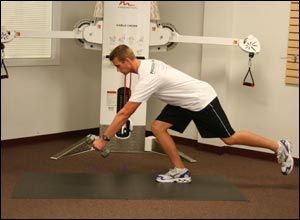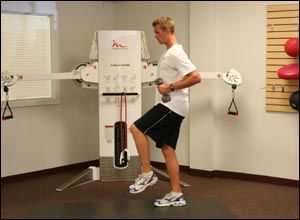Continuing from my past columns regarding stretching and functional range of motion, I will now introduce some simple and very effective “functional” exercises that will expand upon your new-found flexibility that you’ve worked so hard for (assuming you’ve been doing the stretches consistently).
A simple, but often misunderstood, concept to consider is that flexibility and/or movement without a corresponding amount of stability will set you up for injury. Movement needs to be countered with stability; this is achieved through building a combination of strength, balance and muscular endurance to support movement. The great part about functional movement is that all components must be trained simultaneously. So for all you responders out there, this translates into less invested time and more benefit from a few well-performed exercises.
The squat, and its many variations, is one of the most functional and complicated movements the body can perform. All joints and muscles in the lower extremities must fire in a coordinated fashion. Arguably, the squat is one of the most challenging movements an athlete performs, yet we perform dozens of squats a day without the benefit of a warm-up or stable lifting surface.
The variation of this squat is an awesome example of a simple and highly effective movement that can be performed in any station or gym to maximum effect. By performing the movement, you will include strength, balance, stabilization, active flexibility, and core mechanics into one movement (not to mention buns and legs “of steel”).
In my subsequent columns, I will be adding to my series on functional movement, providing exercises and tips that will continue to build up from skills you’ve learned. As I have alluded to many times before, all the movements that those in public safety perform are active and functional; we are not on a factory floor repeating the same actions over and over. Our jobs are dynamic, so let’s make sure we train and exercise that way.
| Squat Reach | Weight: Dumbbell or medicine ball Sets: 2 - 4 Rep’s: 6 - 15 |
| Preparation Movement Tips Progression | |
 Photo courtesy of Fit Responder |  Photo courtesy of Fit Responder |












